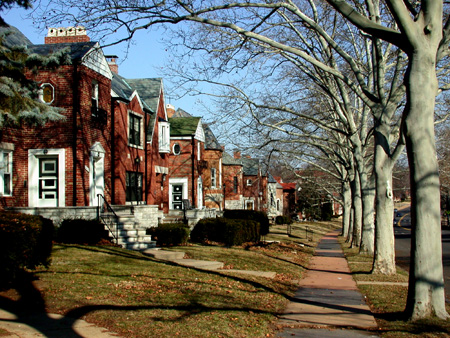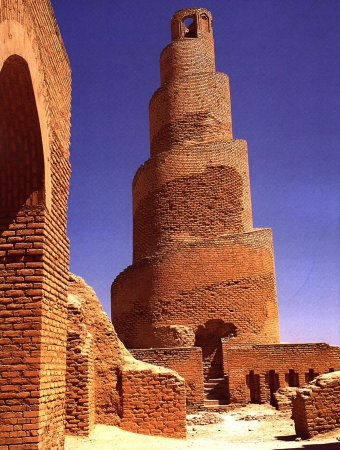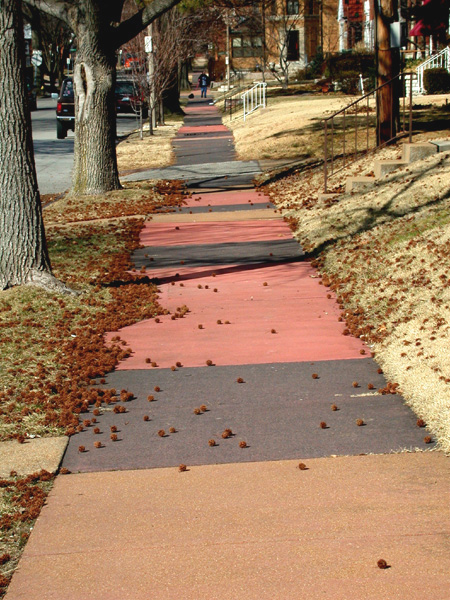Recovered from the Wayback Machine.
I have a passion for architecture, a passion very well satisfied by St. Louis, with its distinctive neighborhoods, and unique mix of styles. Against the backdrop of the futurist, sleek Arch is the whimsy of the Victorian walking parks such as Tower Grove. The sweeping, lush gardens of the South back up to the durability and practicality of baked brick, a distinctively northern touch, reflecting the brick industry in Dogtown.
Friday, I explored another unique neighborhood, the area surrounding Francis park in St. Louis; a place known for the art deco touches in the brick homes. Against the multi-colored and patterned brick and native stone are black wrought iron gates and doors, and many of the windows contain stained glass art work, much of it over 100 years old. Turrets and towers, copper gutters, antique weather vanes, and multi-colored tile roofs combine to create a colorful neighborhood.

I love the use of brick in a building. I love the sense of permanence brick implies. as well as the shared history. Religions may differ and borders drawn and language change, but brick remains brick. It’s through our earlier ancestors use of brick or stone that we’re able to recover so much of our earlier history, from the stones of the pyramids in Egypt, to the use of baked and sun-dried brick in areas such as Samara in Iraq.
Artifact evidence show the use of brick in the area known as Mesopotamia approximately 8000 years ago, several thousand years before the birth of modern religions such as Judaism, Christianity, and Islam. The Ziggerat of Ur that I talked about earlier was constructed with sun-baked bricks in the interior and baked bricks forming the exterior. The process used to bake the bricks then is still used to create bricks today: clay is pressed in molds, stacked with gaps between, covered in mud with twigs pressed through and allowed to burn.

The Tower of Babylon was said to have been made of bricks, and it’s design of spiraling layers growing progressively smaller forms the inspiration for one of the most beautiful buildings ever constructed: the Spiral Minaret of Samara (Al Malwiyya). The Spiral Minaret is one of the largest mosques in the world, and was constructed in 850 AD. It’s built of baked bricks around supporting marble posts, and reflects the interest in ’sacred’ buildings endemic to that era in both the East and the West – a spiritual concept shared by all beliefs of the religions born in Mesopotamia. God and brick have marched shoulder to shoulder through all modern history.

There is so much beauty and variety in brick. We in the west tend to think of the pinkish-red brick when we think ‘brick’ but bricks reflect the material used in their making and can range from a sandstone color to deep reds, and variations in-between.
Brick is valued for more than its beauty; it can withstand much, including storms, fire, and the degradations of time. However, it can’t withstand the acts of modern man. For instance, in order to increase its self-sufficiency due to UN embargos, Iraq is building a series of dams to provide water for farms. One such project is scheduled for completion in 2007, and will flood the ruins of Assur, the capital of the Assyrian empire.
(As a sidenote, many of the more portable artifacts of ancient Mesopotamia were destroyed during the earlier bombing of Iraq when they bank they were stored in for safety was bombed; others were looted and sold to antiquities collectors in the West. Many of these have actually been auctioned on the web, including eBay.)
Returning the discussion to my walk on Friday, another interesting highlight of the area I walked through was the pink sidewalks fronting all the brick homes. Ostensibly pink was used because it provided a softer background for the green of the lawns and the red-rust of the bricks of the homes. However, general consensus is that pink was used as a mark of affluence – pink cement wasn’t in large demand and whatever wasn’t used for a particular walk had to be thrown out because it couldn’t be used elsewhere.
However, there’s pink and then there’s pink. As the photo below demonstrates so well, interpretation of ‘pink’ is as individual as the homeowners themselves.

